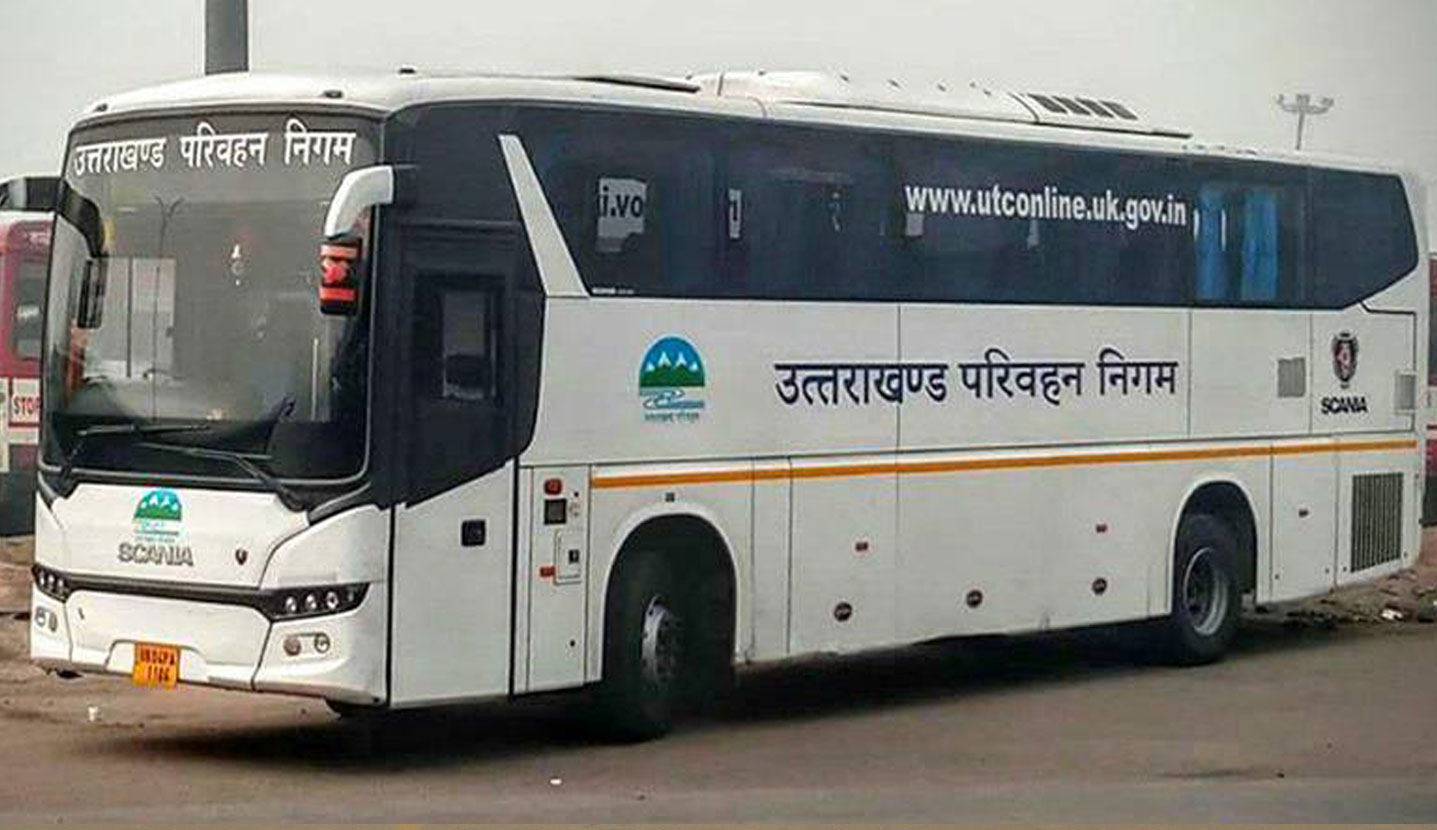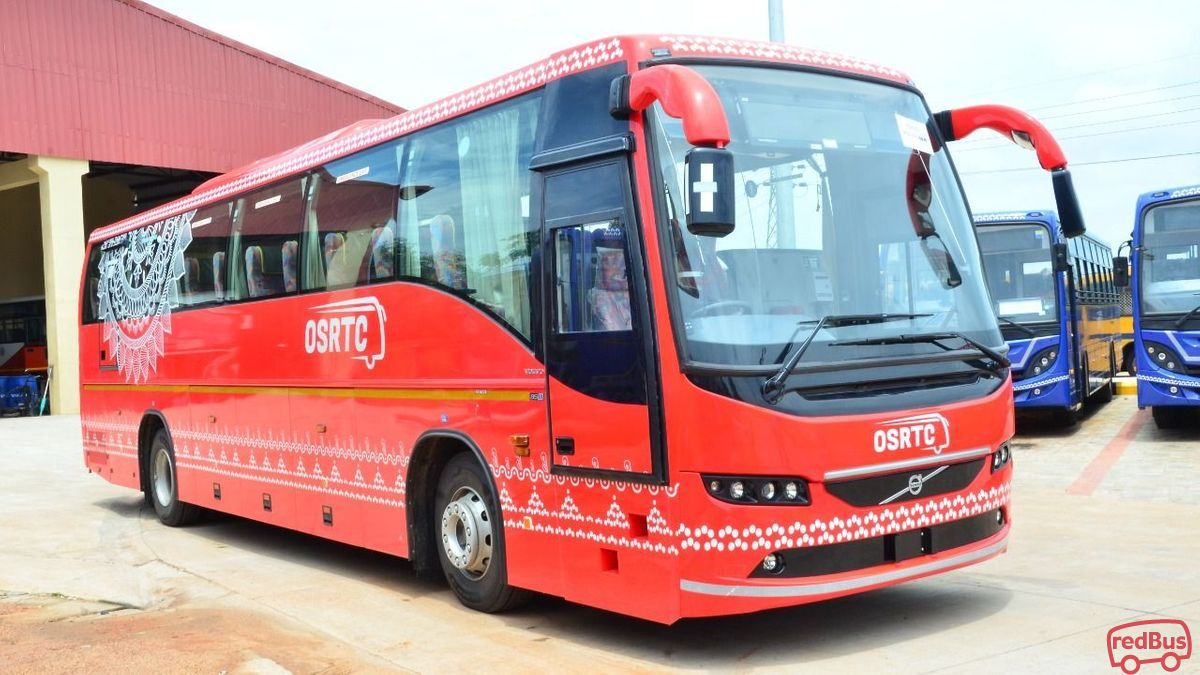Top 20 Best Interurban & Rural Bus Services In India 2023
Top 20 Best Interurban & Rural Bus Services In India 2023

India is a vast country with a large population that relies on public transportation, especially interurban and rural bus services. There are several government-run and private bus operators in the country, providing affordable and efficient transportation options to millions of people every day.
In this overview, we will take a closer look at the top 20 best interurban and rural bus services in India in 2023:
- Andhra Pradesh State Road Transport Corporation (APSRTC):
APSRTC is a state-owned road transport corporation that operates in the southern Indian state of Andhra Pradesh. Established in 1958, it is one of the oldest and most reliable interurban and rural bus services in the country. 
The corporation operates a fleet of over 11,000 buses, covering more than 14,000 routes, connecting remote and urban areas of Andhra Pradesh, Telangana, and other neighbouring states. It also offers online ticket booking services, making it easy for passengers to plan their travel.
- Tamil Nadu State Transport Corporation (TNSTC):
TNSTC is another state-owned transport corporation that operates in the southern Indian state of Tamil Nadu. Established in 1972, it has a fleet of over 22,000 buses, connecting remote and rural areas with urban centers within Tamil Nadu and neighboring states.
The corporation offers several types of buses, including luxury, semi-luxury, and ordinary buses, catering to the needs of different passengers. TNSTC has also introduced online ticket booking services, making it easy for passengers to book their tickets in advance.
- Karnataka State Road Transport Corporation (KSRTC):
KSRTC is a state-owned transport corporation that operates in the southwestern Indian state of Karnataka. Established in 1961, it is one of the most reliable interurban and rural bus services in the region, with a fleet of over 8,500 buses, connecting remote and rural areas with urban centers.
The corporation offers several types of buses, including air-conditioned luxury and semi-luxury buses, catering to the needs of different passengers. KSRTC also provides online ticket booking services, making it easy for passengers to plan their travel.
- Maharashtra State Road Transport Corporation (MSRTC):
MSRTC is a state-owned transport corporation that operates in the western Indian state of Maharashtra. Established in 1948, it is one of the oldest and most reliable interurban and rural bus services in the country, with a fleet of over 18,000 buses, connecting remote and rural areas with urban centers within Maharashtra and neighboring states. 
The corporation offers several types of buses, including luxury, semi-luxury, and ordinary buses, catering to the needs of different passengers. MSRTC also provides online ticket booking services, making it easy for passengers to plan their travel.
- Gujarat State Road Transport Corporation (GSRTC):
Gujarat State Road Transport Corporation (GSRTC) is a state-owned bus service that provides bus services in the state of Gujarat, India. Founded in 1960, it operates over 7,000 buses on 16,000 routes, covering more than 60,000 villages and towns in the state.
GSRTC is headquartered in Ahmedabad and operates from 226 bus stations across Gujarat. The corporation offers various services such as ordinary, express, luxury, sleeper, and Volvo buses, making it an affordable mode of transportation for people from all walks of life.
The buses of GSRTC are well-maintained and equipped with comfortable seats, air conditioning, and entertainment systems. The drivers are well-trained and follow strict safety protocols to ensure passenger safety.
The corporation has also implemented online booking systems, making it convenient for passengers to book their tickets in advance. The GSRTC has received several awards for its efficient and reliable services, including the prestigious National Award for Excellence in Urban Transport Services in 2014.
- Kerala State Road Transport Corporation (KSRTC):
Kerala State Road Transport Corporation (KSRTC) is a state-owned bus service that provides intercity and rural bus services in the state of Kerala, India. Established in 1965, KSRTC operates over 6,000 buses on more than 6,000 routes, covering almost every corner of the state.
The corporation offers various services such as regular, deluxe, super-fast, and Volvo buses, catering to the diverse needs of its passengers.
KSRTC has implemented several measures to ensure passenger safety, such as well-trained drivers, regular maintenance of buses, and strict adherence to traffic rules. The buses are equipped with comfortable seating arrangements, air conditioning, and other amenities.
KSRTC has also implemented online booking systems and mobile applications to make it convenient for passengers to book their tickets.
- Rajasthan State Road Transport Corporation (RSRTC):
Rajasthan State Road Transport Corporation (RSRTC) is a state-owned bus service that provides intercity and rural bus services in the state of Rajasthan, India. Founded in 1964, RSRTC operates over 5,000 buses on more than 5,000 routes, covering almost every city and town in Rajasthan.
The corporation offers various services such as ordinary, express, deluxe, super deluxe, and Volvo buses, catering to the diverse needs of its passengers.
The buses of RSRTC are well-maintained and equipped with comfortable seating arrangements, air conditioning, and other amenities. The drivers are well-trained and follow strict safety protocols to ensure passenger safety.
The corporation has also implemented online booking systems and mobile applications to make it convenient for passengers to book their tickets in advance. RSRTC has received several awards for its efficient and reliable services, including the prestigious National Award for Excellence in Urban Transport Services in 2013.
- Uttar Pradesh State Road Transport Corporation (UPSRTC):
Uttar Pradesh State Road Transport Corporation (UPSRTC) is a state-owned bus service that provides intercity and rural bus services in the state of Uttar Pradesh, India. 
Established in 1947, UPSRTC operates over 11,000 buses on more than 10,000 routes, covering almost every city, town, and village in the state. The corporation offers various services such as ordinary, express, deluxe, super deluxe, and Volvo buses, catering to the diverse needs of its passengers.
UPSRTC has implemented several measures to ensure passenger safety, such as well-trained drivers, regular maintenance of buses, and strict adherence to traffic rules. The buses are equipped with comfortable seating arrangements, air conditioning, and other amenities.
UPSRTC has also implemented online booking systems and mobile applications to make it convenient for passengers to book their tickets. The corporation has received several awards
- Redbus:
Redbus is a popular online bus ticket booking platform in India. It was founded in 2006 and has its headquarters in Bangalore, India. Redbus allows users to book bus tickets for various routes across India.
The platform offers easy and quick booking options and has a user-friendly interface that makes it easy for users to book tickets. They also provide various offers and discounts to users on a regular basis.
Redbus has partnered with over 2,300 bus operators and covers more than 70,000 routes in India.
They offer various bus types such as Volvo, AC, non-AC, sleeper, semi-sleeper, and more. The platform also offers real-time bus tracking, which allows users to track the location of their bus in real-time. Additionally, they have a 24/7 customer support team that helps users with any queries or issues.
- MakeMyTrip:
MakeMyTrip is another popular online travel booking platform in India. Founded in 2000, it offers various travel services such as flight booking, hotel booking, holiday packages, and bus ticket booking.
The platform has a user-friendly interface and offers easy and quick booking options. They also provide various offers and discounts to users on a regular basis.
MakeMyTrip has partnered with over 1,500 bus operators and covers more than 15,000 routes in India.
They offer various bus types such as Volvo, AC, non-AC, sleeper, semi-sleeper, and more. The platform also offers real-time bus tracking, which allows users to track the location of their bus in real-time. Additionally, they have a 24/7 customer support team that helps users with any queries or issues.
- Himachal Road Transport Corporation (HRTC):
Himachal Road Transport Corporation (HRTC) is a state-run bus service in the northern Indian state of Himachal Pradesh. Founded in 1958, it has its headquarters in Shimla, India. The bus service offers intercity and rural bus services across the state and is known for its reliable and safe bus services.
HRTC has a fleet of over 2,000 buses and covers more than 2,500 routes in Himachal Pradesh. They offer various bus types such as Volvo, AC, non-AC, sleeper, semi-sleeper, and more. The buses are well-maintained and equipped with comfortable seating and other amenities.
- Uttarakhand Transport Corporation (UTC):
Uttarakhand Transport Corporation (UTC) is a state-run bus service in the northern Indian state of Uttarakhand. Founded in 2003, it has its headquarters in Dehradun, India. The bus service offers intercity and rural bus services across the state and is known for its reliable and safe bus services.
UTC has a fleet of over 1,200 buses and covers more than 2,500 routes in Uttarakhand. They offer various bus types such as Volvo, AC, non-AC, sleeper, semi-sleeper, and more. The buses are well-maintained and equipped with comfortable seating and other amenities. Additionally, UTC has a 24/7 customer support team that helps users with any queries or issues.
- Bihar State Road Transport Corporation (BSRTC):
BSRTC is the state-owned bus service of Bihar that offers efficient and affordable transport services to the people. It has a fleet of over 2000 buses that connect all the major cities and towns of Bihar. BSRTC also provides inter-state bus services to neighboring states like Uttar Pradesh, Jharkhand, and West Bengal.
The buses are well-maintained and equipped with modern amenities like air-conditioning, comfortable seating, and on-board entertainment. BSRTC has a well-trained team of drivers and staff who ensure the safety and comfort of passengers. They also provide online booking facilities and mobile apps for the convenience of passengers.
- Jharkhand State Road Transport Corporation (JSRTC):
JSRTC is the state-owned bus service of Jharkhand that provides reliable and affordable bus services to the people. It has a fleet of over 1000 buses that connect all major cities and towns of Jharkhand.
JSRTC also provides inter-state bus services to neighboring states like Bihar, West Bengal, and Odisha. The buses are well-maintained and equipped with modern amenities like air-conditioning, comfortable seating, and on-board entertainment.
JSRTC has a well-trained team of drivers and staff who ensure the safety and comfort of passengers. They also provide online booking facilities and mobile apps for the convenience of passengers.
- Odisha State Road Transport Corporation (OSRTC):
OSRTC is the state-owned bus service of Odisha that provides reliable and affordable bus services to the people. It has a fleet of over 4000 buses that connect all major cities and towns of Odisha. 
OSRTC also provides inter-state bus services to neighboring states like Andhra Pradesh, Chhattisgarh, Jharkhand, and West Bengal. The buses are well-maintained and equipped with modern amenities like air-conditioning, comfortable seating, and on-board entertainment.
OSRTC has a well-trained team of drivers and staff who ensure the safety and comfort of passengers. They also provide online booking facilities and mobile apps for the convenience of passengers.
- West Bengal Surface Transport Corporation (WBSTC):
WBSTC is the state-owned bus service of West Bengal that provides reliable and affordable bus services to the people. It has a fleet of over 2000 buses that connect all major cities and towns of West Bengal.
WBSTC also provides inter-state bus services to neighboring states like Bihar, Jharkhand, and Odisha. The buses are well-maintained and equipped with modern amenities like air-conditioning, comfortable seating, and on-board entertainment.
WBSTC has a well-trained team of drivers and staff who ensure the safety and comfort of passengers. They also provide online booking facilities and mobile apps for the convenience of passengers.
- Madhya Pradesh State Road Transport Corporation (MPSRTC)
Madhya Pradesh State Road Transport Corporation (MPSRTC) is a state-owned bus service provider that operates in the central Indian state of Madhya Pradesh. Established in 1952, MPSRTC has a fleet of over 4,500 buses and covers more than 8 lakh kilometers per day, serving over 15 lakh passengers daily.
The bus operator is known for its comfortable, punctual, and affordable services, making it a popular choice among the locals.
MPSRTC operates a range of bus services, including intercity, interstate, and rural bus services, connecting major cities, towns, and villages in the state. The buses are equipped with modern amenities such as air conditioning, reclining seats, and charging points, making the long journeys more comfortable for the passengers.
The bus operator also has a well-maintained online booking platform that allows passengers to book their tickets in advance and track the bus in real-time.
- Assam State Transport Corporation (ASTC)
Assam State Transport Corporation (ASTC) is a government-run bus service provider that operates in the northeastern state of Assam. Established in 1970, ASTC has a fleet of over 1,000 buses and covers more than 4 lakh kilometers per day, serving over 4 lakh passengers daily.
The bus operator is known for its safe, reliable, and affordable services, making it a popular choice among the locals.
ASTC operates a range of bus services, including intercity, interstate, and rural bus services, connecting major cities, towns, and villages in the state. The buses are equipped with basic amenities such as comfortable seats and luggage storage, making the journeys comfortable for the passengers.
The bus operator also has an online booking platform that allows passengers to book their tickets in advance and track the bus in real-time.
- Manipur State Road Transport Corporation (MSRTC)
Manipur State Road Transport Corporation (MSRTC) is a government-run bus service provider that operates in the northeastern state of Manipur. Established in 1976, MSRTC has a fleet of over 400 buses and covers more than 1 lakh kilometers per day, serving over 1 lakh passengers daily.
The bus operator is known for its punctual, reliable, and affordable services, making it a popular choice among the locals.
MSRTC operates a range of bus services, including intercity, interstate, and rural bus services, connecting major cities, towns, and villages in the state.
The buses are equipped with basic amenities such as comfortable seats and luggage storage, making the journeys comfortable for the passengers. The bus operator also has an online booking platform that allows passengers to book their tickets in advance and track the bus in real-time.
- Meghalaya Transport Corporation (MTC)
Meghalaya Transport Corporation (MTC) is a government-run bus service provider that operates in the northeastern state of Meghalaya.
Established in 1983, MTC has a fleet of over 200 buses and covers more than 1 lakh kilometers per day, serving over 50,000 passengers daily. The bus operator is known for its safe, reliable, and affordable services.
In conclusion
Interurban and rural bus services are an essential mode of transportation in India, and state-owned bus services play a crucial role in providing efficient and affordable transportation to the people. The above-discussed state-owned bus services are the top 20 best interurban and rural bus services in India in 2023, providing safe and comfortable travel experience to their passengers.




